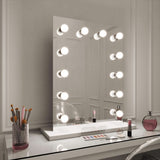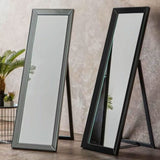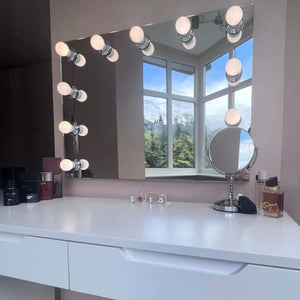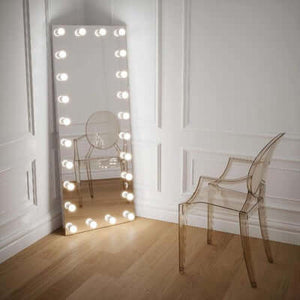Imagine turning back the hands of time to see the original beauty of a precious decor.
To many, reviving the charm of old metal mirror frames can be a rewarding project.
These frames often carry a sense of history and style that modern frames struggle to replicate.
Whether it's a family heirloom or a flea market find, restoring its beauty enhances your decor and preserves a piece of the past.
This guide walks you through the steps and tools needed to bring these treasures back to life. Continue reading to learn how!

What You'll Need
Before diving into the restoration process, ensure you have all the necessary tools and materials.
The right equipment will make the job easier and safer, ensuring a successful outcome.
Here's what you'll need:
-
Safety gear (Gloves and goggles):Protect your hands from sharp edges and your eyes from flying debris.
-
Pliers (for bending wire -Maun pliers are best):Essential for adjusting or reshaping the frame's metal parts.
-
Wire brush or sandpaper:Remove rust and old paint, revealing the metal beneath.
-
Rust converter:Converts rust into a protective layer, preventing further corrosion.
-
Metal primer:Prepares the metal surface for painting, ensuring better adhesion and longevity.
-
Paint:Choose a metal-appropriate paint in your desired finish (matte, satin, glossy) for a fresh look.
-
Clear sealant:To protect the paint and metal from moisture and wear.
-
Soft cloths:These are used to clean the frame and apply the sealant.
-
Mild detergent:To clean the frame before starting the restoration.
-
Painter's tape:To protect the mirror from paint and primer.
-
Small paintbrushes:For detailed painting work.
Now that you have gathered all the necessary tools and materials, you can begin restoration. Continue reading for the next steps!
How to repair your old metal mirror frame
The key to a successful restoration is patience and attention to detail. Take your time with each step to ensure the best results.
Here's how to proceed:

Preparation
Before you start, ensure you are wearing the appropriate safety gear. Gloves protect your hands from sharp edges and rust particles, while goggles prevent debris from getting into your eyes.
Clean the frame with a mild detergent mixed with water to remove dust, dirt, and greasy residues. This step helps reveal the metal's actual condition beneath any grime.
Use a soft cloth or sponge to scrub the surface gently.
For intricate designs or hard-to-reach areas, a soft-bristled brush can be effective. Rinse the frame with clean water and dry thoroughly with a clean cloth.
Rust and paint removal
Use a wire brush or sandpaper to scrape away rust and peeling paint. A wire brush is effective for more extensive, flatter areas, while sandpaper can be used for finer work and to reach nooks and crannies. Consider using a smaller, hand-held wire brush or fine-grit sandpaper for detailed or delicate areas to avoid damaging the frame.
This step might take time, especially if there's significant rust or multiple layers of old paint. Remember, patience is vital.
Applying rust converter
If, after scraping, you still find areas with rust that are difficult to remove, apply a rust converter with a paintbrush. Doing so will chemically convert rust into a stable, black protective coating that can be painted over. Follow the manufacturer's instructions for application and drying times.
Neutralizing and cleaning
Clean the frame once all rust has been addressed to remove any dust, debris, or chemical residues from the rust converter. A damp cloth can be used for this purpose. Ensure the frame is completely dry before proceeding to the next step.
Applying metal primer
Apply a metal primer to the frame to ensure good paint adhesion and provide an extra layer of protection against corrosion. Use a primer appropriate for your frame's metal type and the type of paint you will be using. Then, allow the primer to dry completely according to the product's instructions.
Taping off areas
If the mirror is still in the frame or there are areas you don’t wish to paint or treat, use painter's tape to protect these sections. Ensure the tape is securely applied to avoid primer or paint seeping under the edges
Following the above steps, you'll have successfully prepared your old metal mirror frame for repair and refinishing.
The better the preparation, the more stunning and durable the result.
Remember, taking your time during the preparation phase is crucial to achieving a beautiful and long-lasting restoration.
Painting
After the primer has dried,apply your chosen paint to the frame. You may need several coats for even coverage. Let each coat dry thoroughly before applying the next.
Sealing
Finally, apply a clear sealant over the painted surface to protect it from moisture and wear. Doing so will also enhance the paint's durability and finish.
Finishing touches
After the sealant has dried, remove the painter's tape from themirror. Use a soft cloth toclean up any residue or fingerprints.

Conclusion
Restoring an old metal mirror frame to its former glory is a project that can bring personal satisfaction and a unique touch to your home décor.
With patience, the right tools, and effort, you can breathe new life into a piece that reflects your style and the frame's historical charm.
 Alicia Hollywood Mirror 60cmx80cm
Alicia Hollywood Mirror 60cmx80cm Angelina Full Length Arch Hollywood Mirror 160 x 60cm
Angelina Full Length Arch Hollywood Mirror 160 x 60cm Angled Luna Mirror-Cheval Black
Angled Luna Mirror-Cheval Black Angled Luna Mirror-Cheval Gray
Angled Luna Mirror-Cheval Gray







































